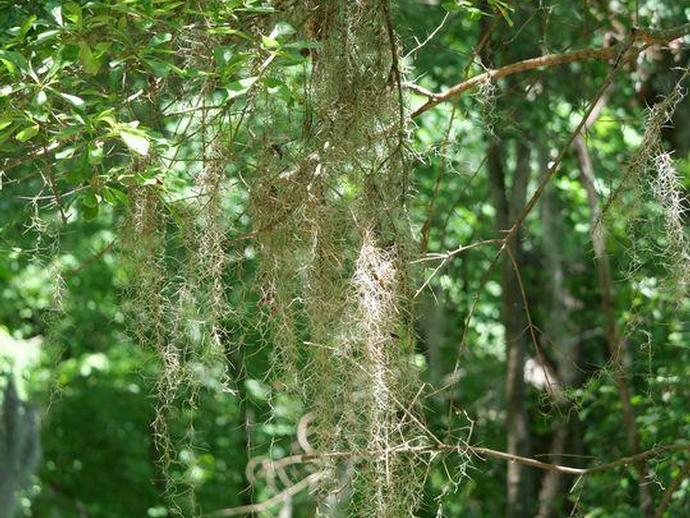May 13, 2021
It's time for the Thursday edition of #BenInNature presented by our friends at Carter Bank & Trust!
Here's another cool find from my recent trip to Phinizy Swamp Nature Park in Augusta, Georgia: Spanish moss!
Spanish moss (Tillandsia usneoides) is neither Spanish, nor is it moss! It's actually a flowering plant in the family Bromeliaceae, also known as the bromeliads. There are more than 3,500 bromeliads, all of which are native to the southern U.S., Mexico, Central America, and South America. Believe it or not, Spanish moss is more closely related to pineapples than to moss or lichens!
This unusual plant can be found in Virginia, although you'll have to go to the southeastern corner of the state to find it; the northern extent of its range is Virginia's Eastern Shore. From there, it extends all the way down through Argentina.
Spanish moss typically grows on southern live oaks (Quercus virginiana) and bald cypress (Taxodium distichum), although it can colonize other tree species. However, it is not a parasite. It is "epiphytic," meaning that it is able to collect nutrients from the air and from debris that collects on the plant! The long strands of the plant are covered in tiny scales that serve to collect nutrients and moisture. However, even though it isn't a parasite, Spanish moss can sometimes grow so thick that it shades a tree's leaves, thereby lowering the growth rate!
While today it's mostly used in arts and crafts, Spanish moss was once used for building insulation, packing material, and in the early 1900s, it was even used to stuff the cushions of car seats! Of course, the greatest use of Spanish moss is very well-documented: if you're making a Southern Gothic horror movie, nothing telegraphs imminent spooky events quite like Spanish moss hanging on a tree outside the crumbling old manor!
ABOUT #BenInNature
Social distancing can be difficult, but it presents a great opportunity to become reacquainted with nature. In this series of posts, Administrator of Science Ben Williams ventures outdoors to record a snapshot of the unique sights that can be found in the natural world. New updates are posted Monday - Friday, with previous posts highlighted on the weekends. This series of posts is made possible thanks to the support of VMNH Corporate Partner Carter Bank & Trust (www.cbtcares.com).
NATURE PHOTO IDENTIFICATIONS
If you discover something in nature that you would like help identifying, be sure to message us right here on Facebook with a picture (please include location and date of picture) and we'll have our experts help you identify it!

 Hours & Admissions
Hours & Admissions Directions
Directions

